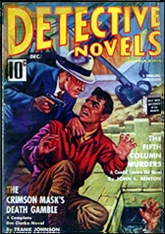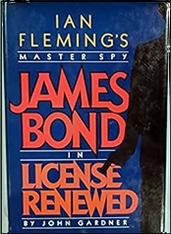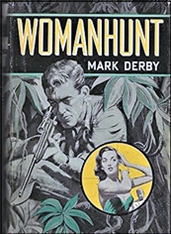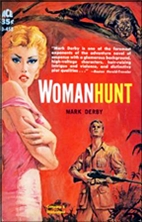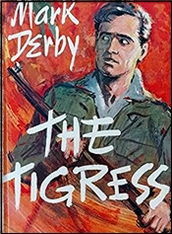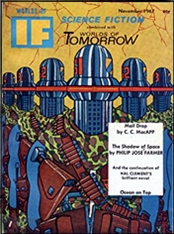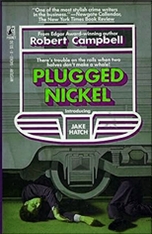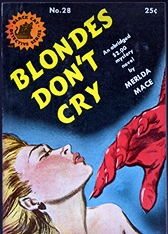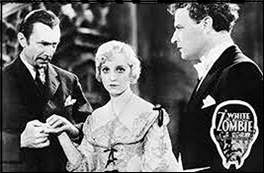REVIEWED BY DAVID VINEYARD:
MARK O’NEILL – To Catch a Spy. Poisoned Pen Press, softcover, 2025.
We open on the Riviera, John Robie, the Cat, is pursuing a man who just fired at him across the roof of the Hotel Carlton:
“Over here! I’ve got him,” John was well positioned. They weren’t going anywhere. He looked down at the man, thinking about how to get him back on the roof. The man looked up, his eyes locked on John’s, and he let loose a deep growl of anger. John watched as the man looked down to the street. Through his right arm, John could feel the man’s body relax. Then the man raised both arms and slid out of his jacket.
And just like that, he fell to his death.
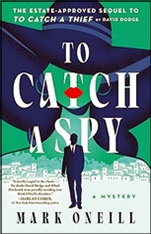
One year has passed and once again John Robie, le Chat, the famed jewel thief and Resistance hero is back on a roof pursuing a fugitive, this time for his aristocratic friend Paul Du Pre who Robie had asked to help him reconnect with Francine “Francie” Stevens, the American heiress who had helped him clear his name of a series of crimes on the Riviera and then mysteriously left as their romance heated up.
As a favor John agreed to break into a room in the Hotel Carlton and check on a man, and now the man has fired at him and fled across the roof falling to his death.
To make manners worse the policeman called in is Le Pic, the officer who thought a year earlier he finally had a noose around the neck of the infamous Cat only to be humiliated when Robie broke a criminal ring of jewel thieves copying Robie’s pre war exploits.
Le Pic would like to arrest Robie, but De Pre is not only wealthy and an aristocrat, he is also tied to counter-intelligence and the man who just fell to his death may be an enemy agent.
To Catch a Spy is the Estate Approved sequel to the novel To Catch a Thief by David Dodge and the film by Alfred Hitchcock with Cary Grant and Grace Kelly.
The film is a classic and hardly needs to be mentioned, but the novel it is based upon needs a bit more introduction. Author David Dodge was a noted travel writer who brought a fresh perspective to his works with his photographic skills and because he traveled his post war haunts with his wife and family in tow.
In addition to his travel books he was a mystery writer of some note, writing the hard-boiled CPA series about Ira Whitney (Death and Taxes), tales of American Private Eye and relic hunter Al Colby in Central America (Plunder in the Sun), tough Secret Service agent John Lincoln (Hooligan), and stand-alone thrillers like La Carambola and his most famous work, To Catch a Thief.
I first bonded with my then writing partner Nicholas Boving, a fellow Seven League Booter, over our mutual appreciation of Dodge, who has not had the respect he deserves, though Plunder was reprinted by Hard Case Crime along with one last posthumous novel,, and To Catch a Thief has been reprinted numerous times since it first came out
Dodge’s tongue’n-cheek approach to crime, adventure, and travel mixed with his easy gift for characterization and plot coming from it made him a perfect companion for travel and relaxing escapist reading, so it was with some trepidation I approached a sequel to his most famous work no matter how much it deserved one.
Happily Mark O’Neill pulls it off, picking up one year after the events in the original, and like the original, plunging our hero into action and danger on page one. This time Robie must use his old skills to negotiate the treacherous world of spies, but also his troubled relationship with Francie Stevens, the American heiress who got cold feet and abandoned him a year earlier.
Now Francie is returning to the Riviera with a fashion show and Alex, a new fiance, and before he can hope to reconnect with her Robie has to deal with the fact she is almost certainly a part of the spy ring he has found himself committed to breaking before they kill him.
Relying on old allies and avoiding old enemies like Le Pic, Robie must uncover the leaders of the spy ring and hopefully clear Francie, if she is innocent, while on the run and unsure why Francie has turned on him.
The good news is the book is a perfect balance between Dodge’s novel and the fairly faithful adaptation by Alfred Hitchcock, screen writer John Michael Hayes and his team. For a first novel the writing is assured, pleasantly straight forward, and aware of the big shoes it is filling without being self conscious about it.
Chances are if you love the movie or the book this will be a satisfying chance to spend time with the characters in a new adventure.
The book isn’t perfect. It is a bit long at 345 pages, probably to be expected in today’s publishing world, and I don’t agree with every editorial choice made, but it is also remarkable in that it finds a balance between the novel and film (close as they are, there are major differences) without shorting either.
“The public knows him as a burglar, but let me tell you, John Robie is one of a kind…” So were David Dodge and Alfred Hitchcock, and neither should be disappointed by this tribute to their accomplishments. Like the originals To Catch a Spy is froth and fun, and has just enough of an edge and just enough twists and turns to be perfect escapist reading with a mix of glamour, humor, romance, suspense, and thrills.
It’s champagne, and pink champagne at that, a Brut, a dessert wine and not a vintage, but it tickles the nose and lightly intoxicates, and it makes a pleasant escape from grim reality and cozy domesticity.
